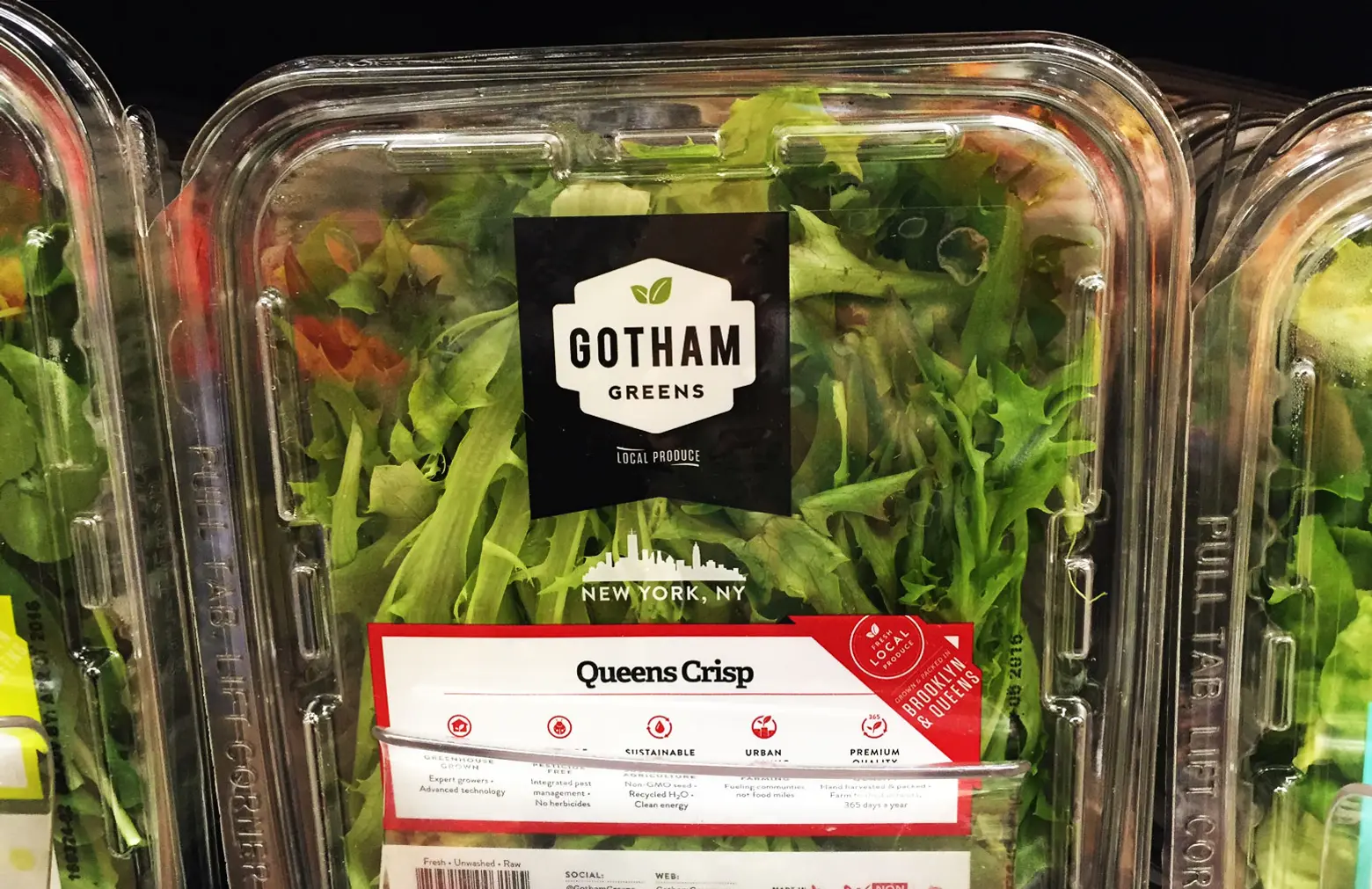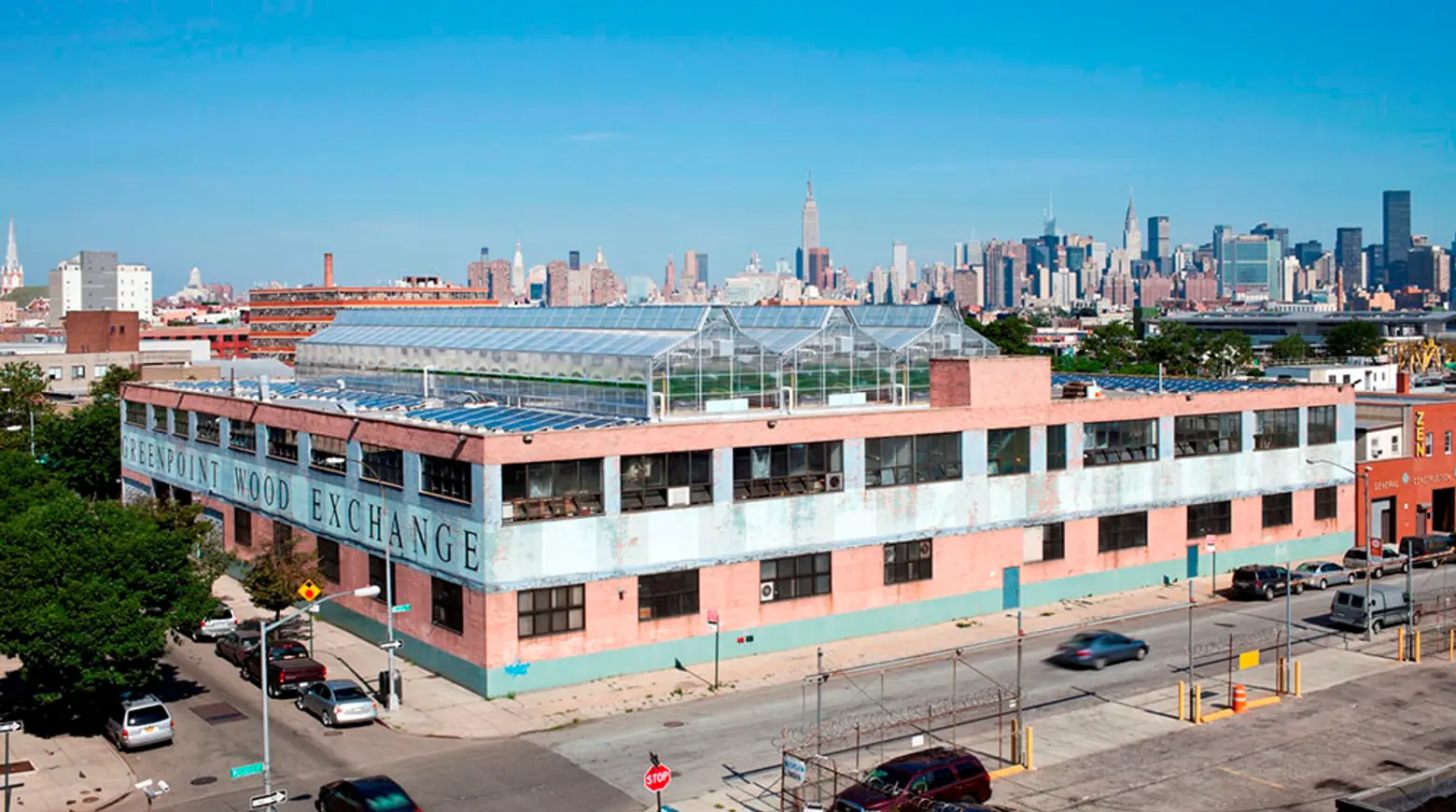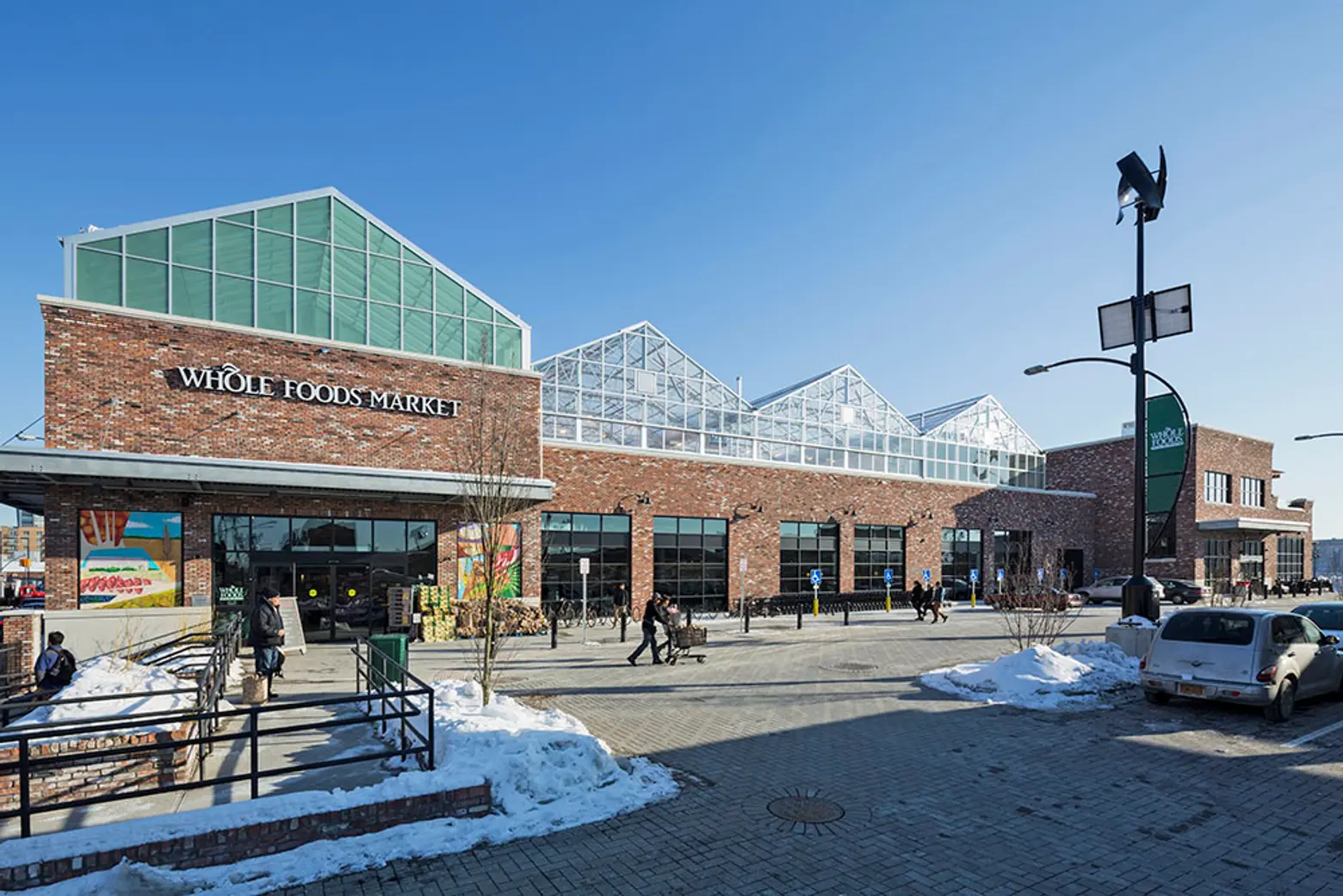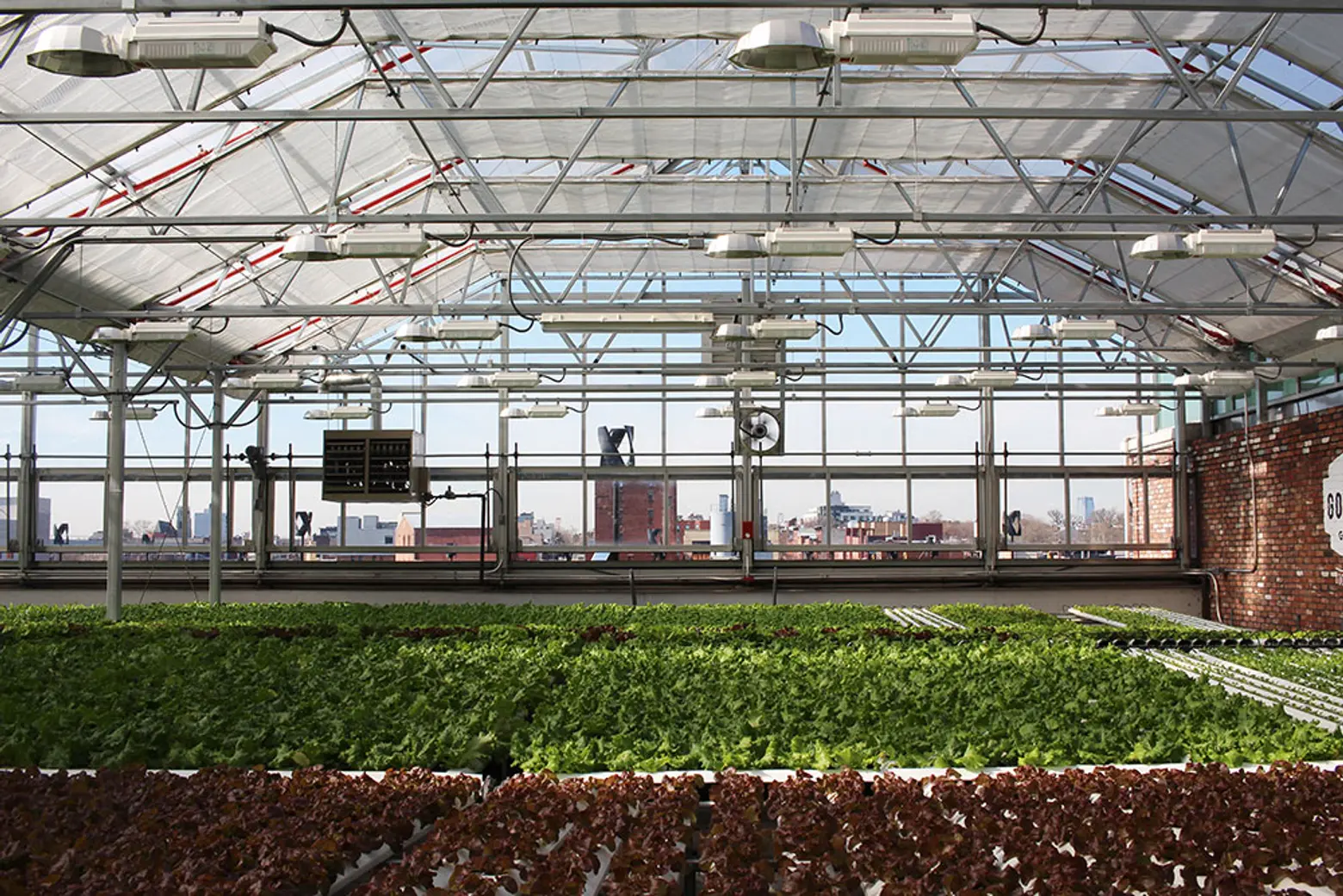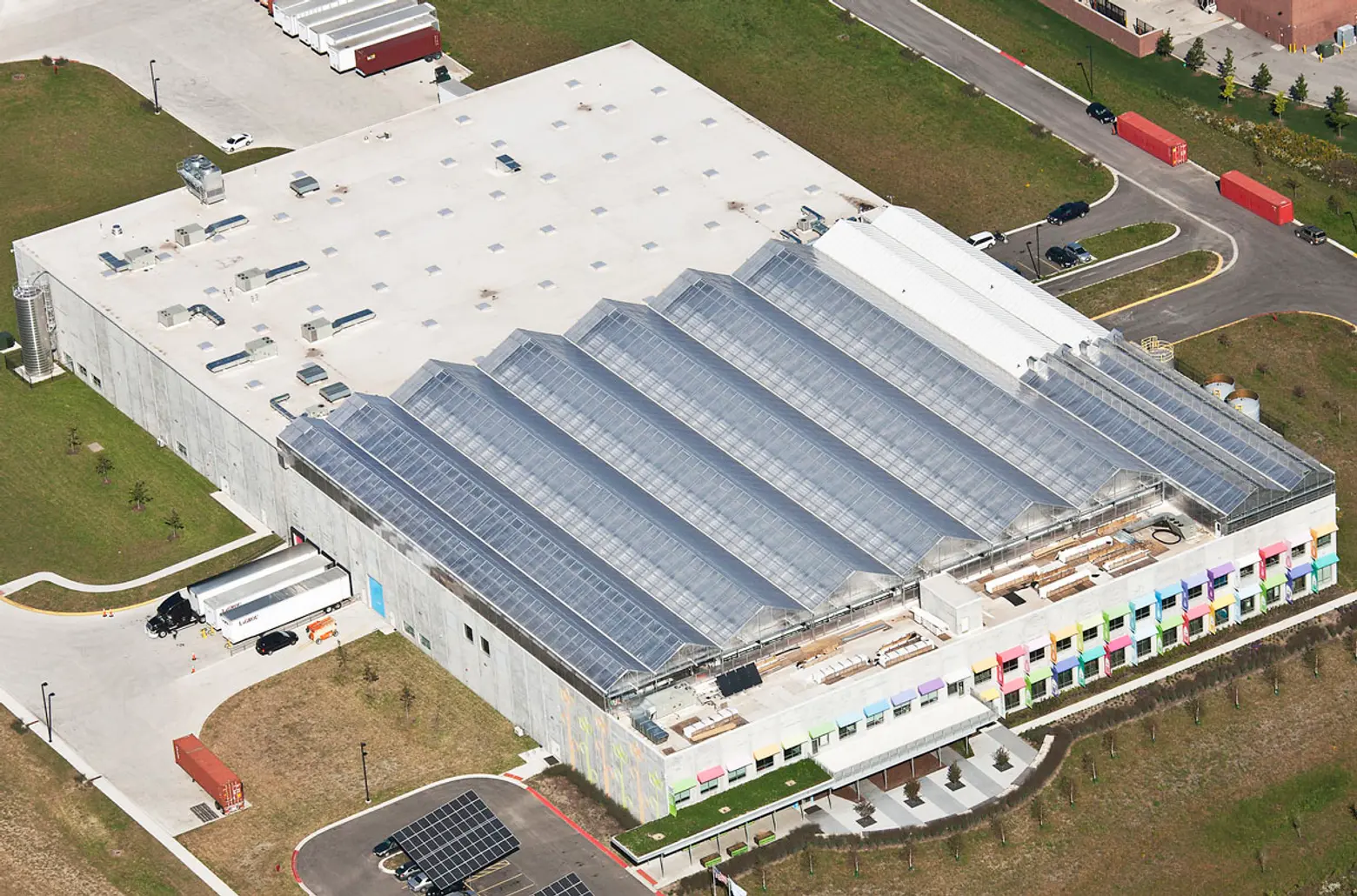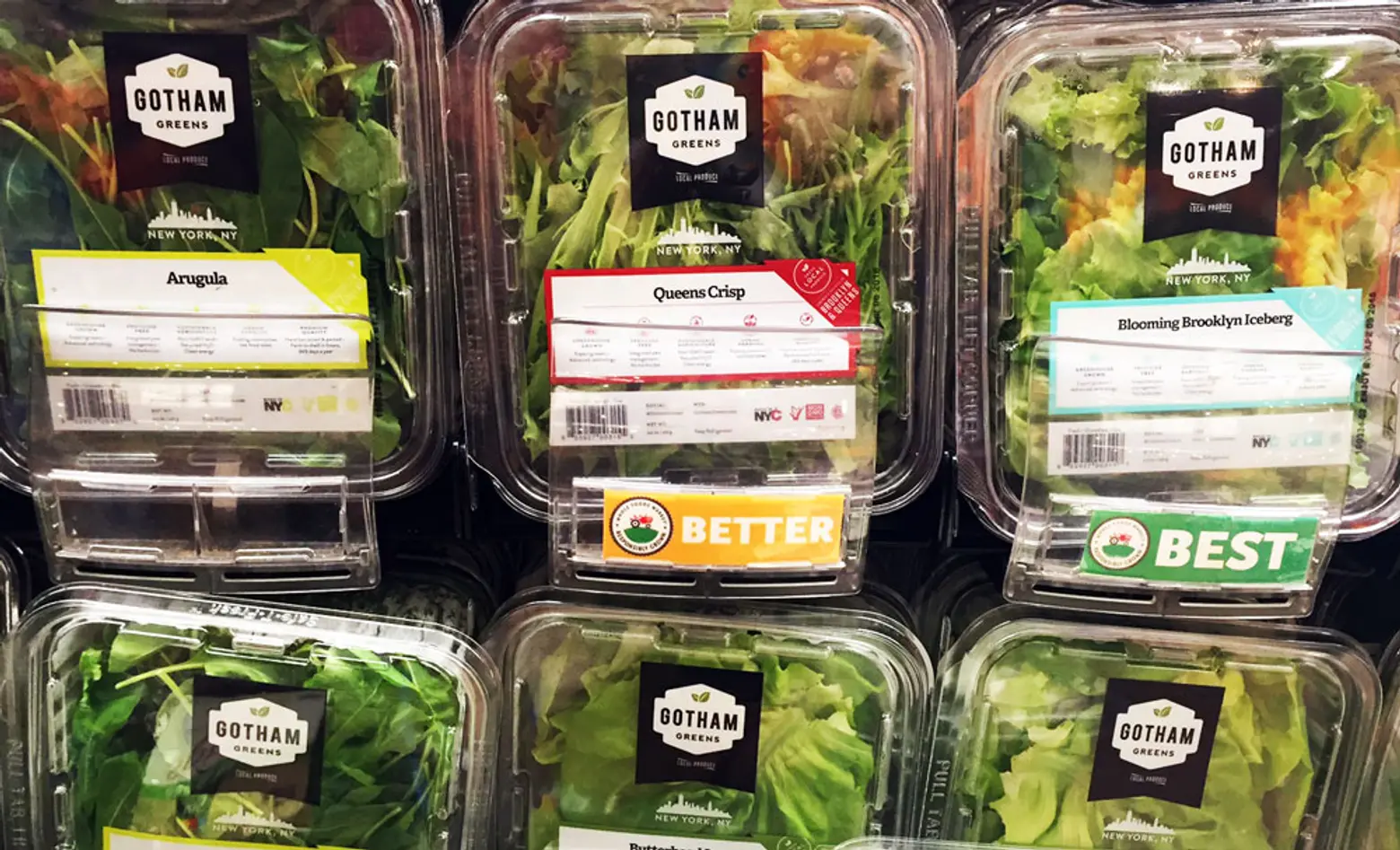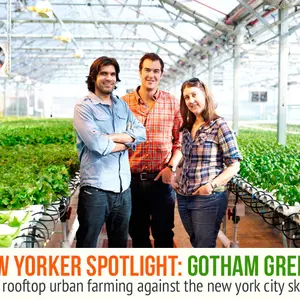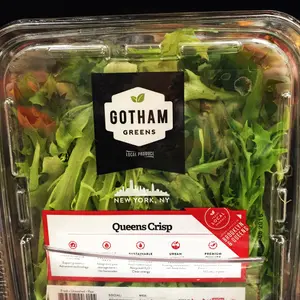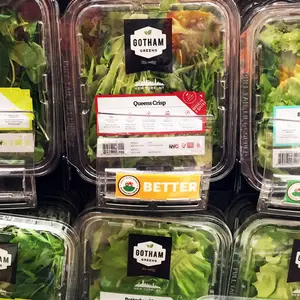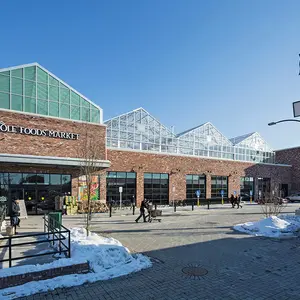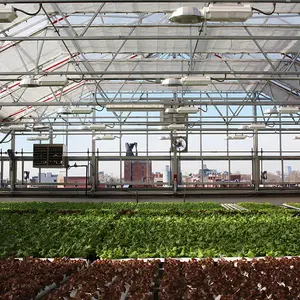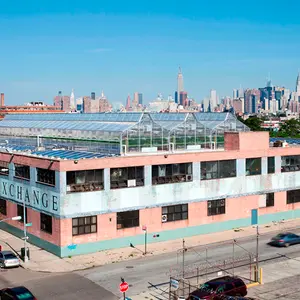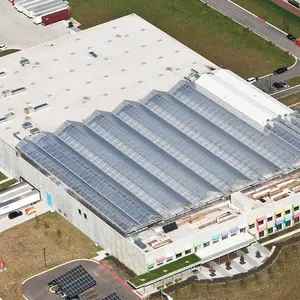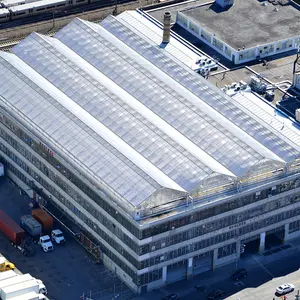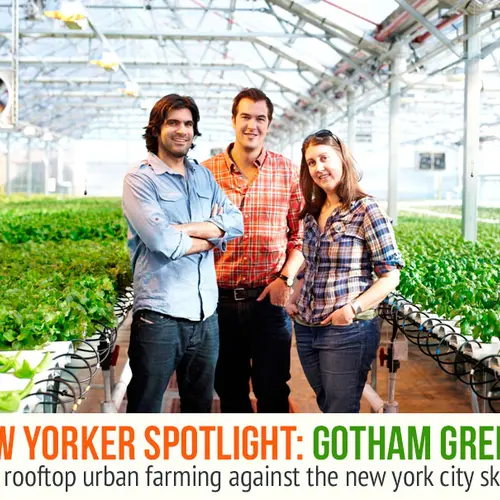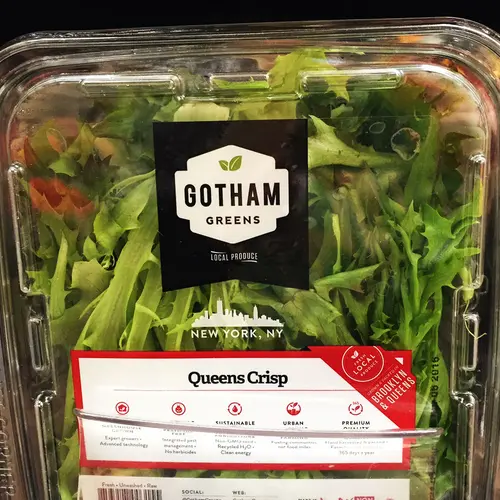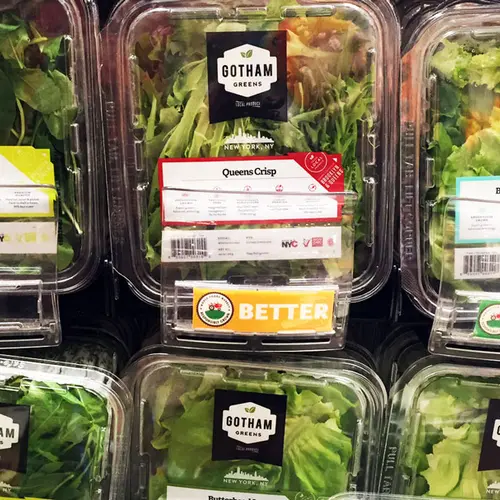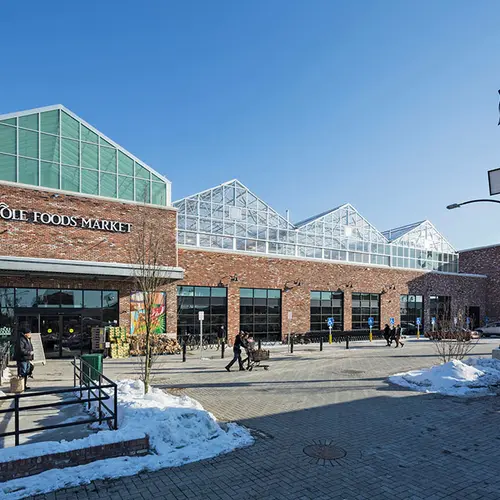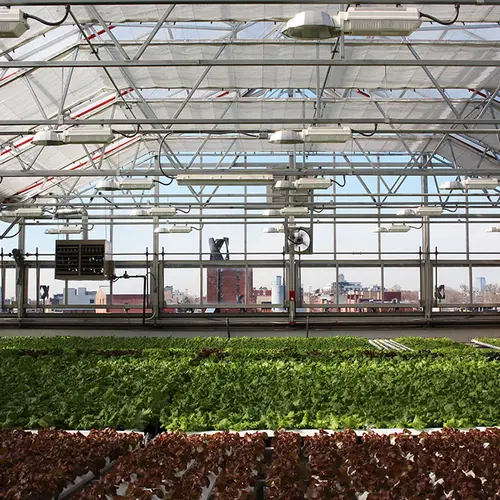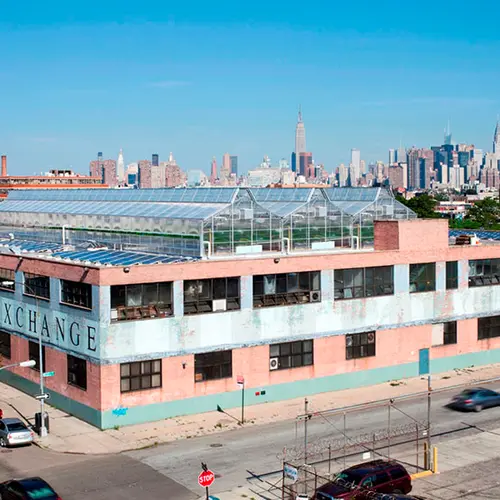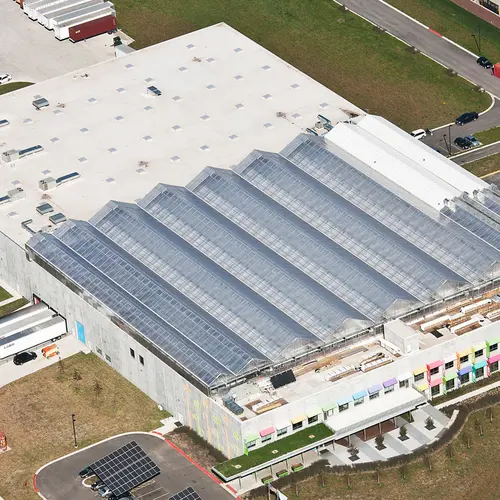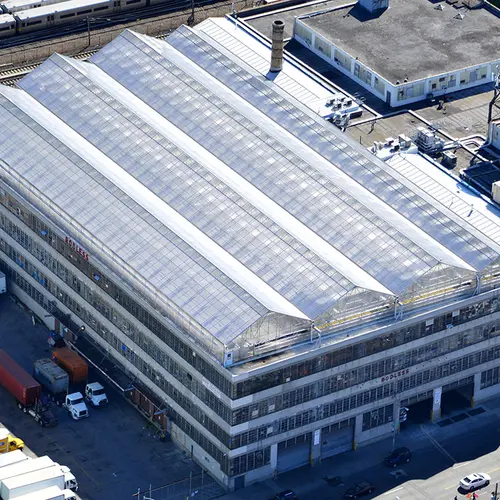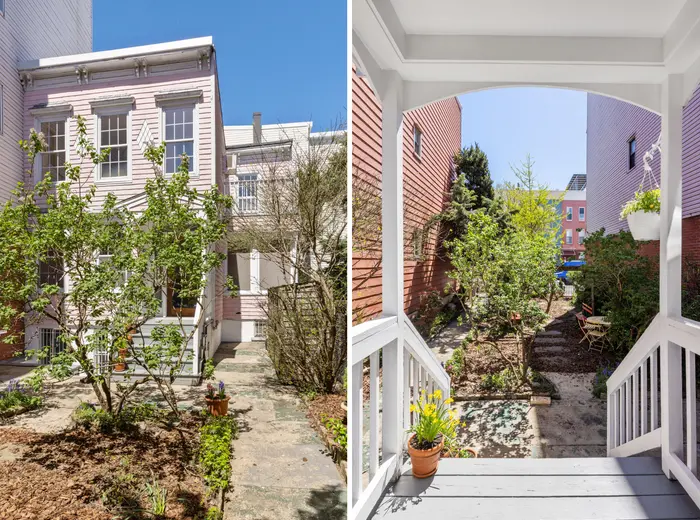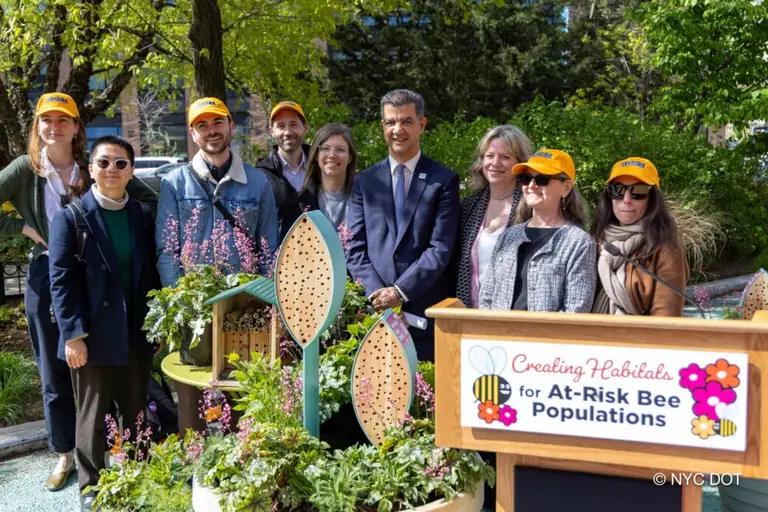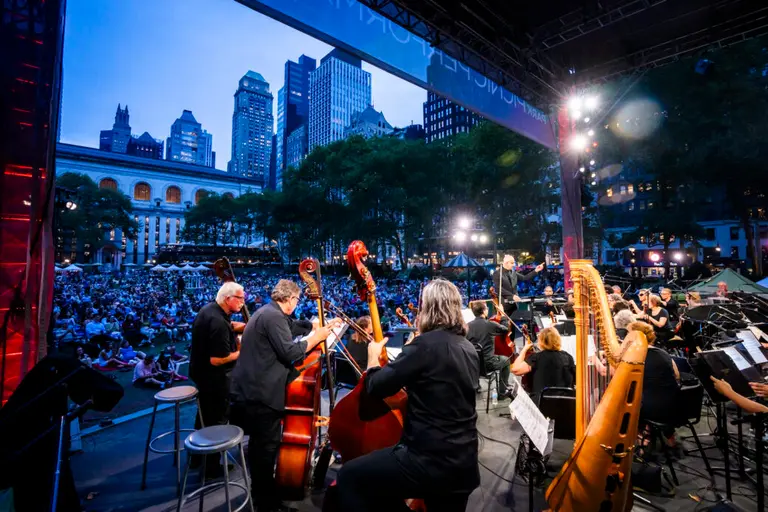Spotlight: Gotham Greens Talks Rooftop Farming Against the New York Skyline
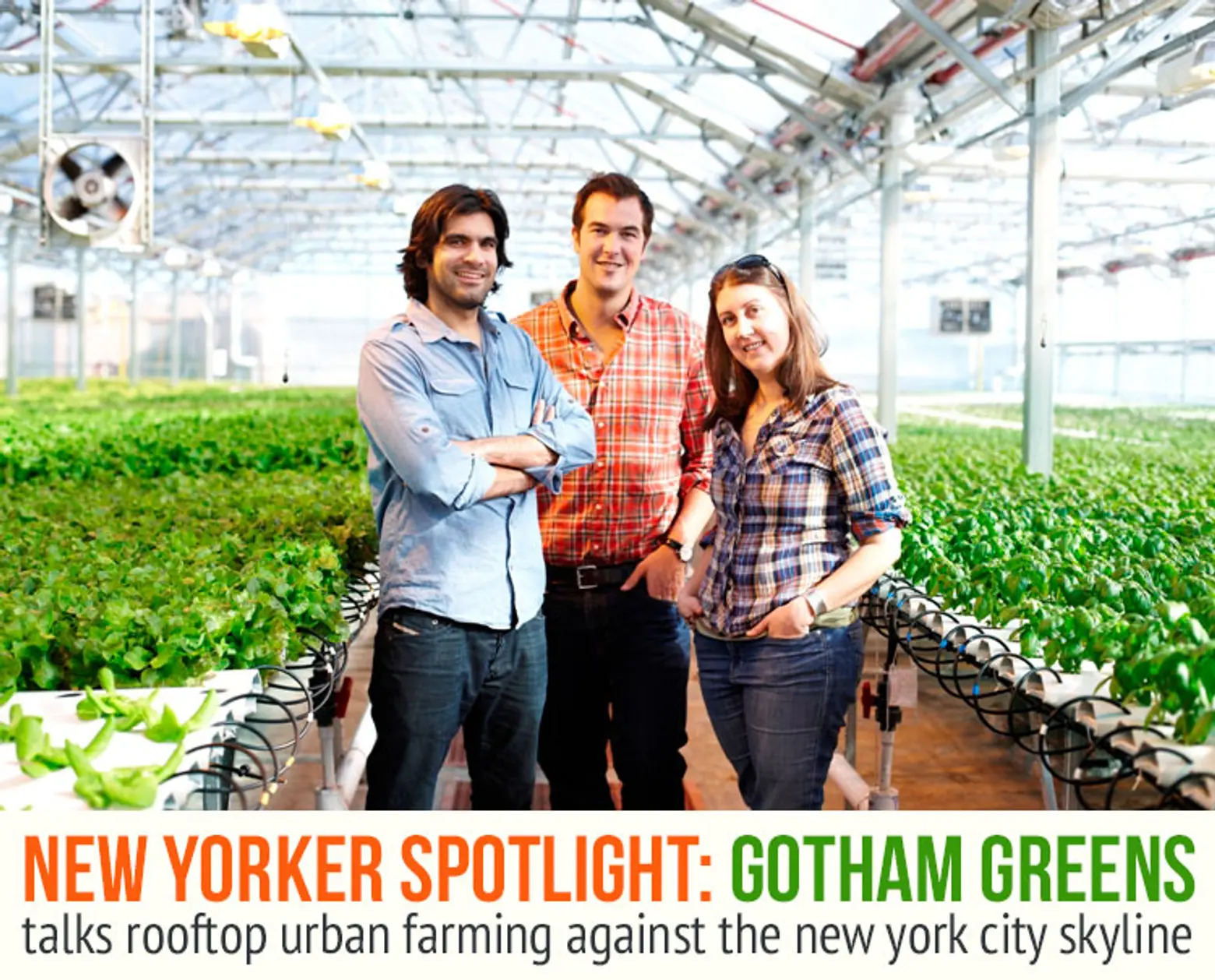
The Gotham Greens team: Viraj Puri, Eric Haley and Jennifer Nelkin Frymark
If you walk through the produce section at Whole Foods or scroll through Fresh Direct’s website, you likely have come across Gotham Greens’ Blooming Brooklyn Iceberg Lettuce or Queens Crisp. What make these lettuces different from others is that they’re local, urban greens, which are grown on rooftop greenhouses in Brooklyn and Queens with views of Gotham not too far in the distance.
Gotham Greens was founded in 2009 with the goal of revolutionizing urban farming and providing a model for the future when cities are expected to be even more densely populated. One of the visionaries behind the company is co-founder and CEO Viraj Puri. Viraj and his partners started with one greenhouse in Greenpoint and now have four greenhouses between New York and Chicago that cover over 170,000 square feet and produce 20 million heads of lettuce every year.
6sqft recently asked Viraj some questions about what’s growing in Gotham.
What inspired you to co-found Gotham Greens?
Cities don’t have a lot of arable land or fertile soil, but they do have a lot of rooftop space. In places like NYC and Chicago where we have harsh seasons, most of the greens we typically have access to during the winter have been shipped across the country and their taste and nutritional value is often compromised. My partners and I wanted to address the ecological and public health concerns surrounding conventional agriculture. We had a vision for a local, ecologically driven, urban farm operation that could offer city dwellers fresh and high quality greens year-round, and at competitive prices.
Why does Gotham Greens describe its farms as “unconventional?”
When people think of farms, a rooftop greenhouse in the city isn’t necessarily the first thing that comes to mind! We don’t use pesticides and our produce is grown sustainably in technologically-sophisticated, 100-percent clean energy powered, climate-controlled urban rooftop greenhouses. Our irrigation system actually uses 10 times less water than conventional agriculture, while eliminating all agricultural runoff. We’re able to produce 20-30 times more crops than traditional soil-based farms.
Out of all the produce available, why did the company select lettuce?
Since we’re growing in rooftop greenhouses that have a limited footprint, we knew we wanted to grow a product that was in high demand and typically not accessible locally year-round. Lettuces and herbs lend themselves well to being grown hydroponically and they’re typically shipped long distances from places like California, Florida and Mexico. With Gotham Greens, we wanted to focus on growing highly perishable produce like lettuce and basil since these seasonal greens usually travel the furthest and thus have the highest carbon footprint. Growing on an urban rooftop greenhouse enables us to harvest daily and deliver directly to supermarkets and restaurants within hours of picking. This drastically reduces food waste, eliminates the need for long distance trucking, and gives people a fresher and more nutritious product.
What made Greenpoint the perfect location to start farming?
In 2011, we built our flagship greenhouse in Greenpoint and it was the first commercial-scale rooftop greenhouse in the United States. People thought we were crazy when we told them we wanted to build large-scale greenhouses on city roofs. We initially hit a number of setbacks and challenges finding the right landlord. There was no blueprint to follow for what we were trying to do so we’ve had to learn as we went along. Perseverance goes a long way. But Greenpoint was a welcoming neighborhood and it’s a fascinating neighborhood with an edgy mix of industrial, art and residential real estate. There’s a great deal of innovation happening in Greenpoint.
What are some of the architectural and design considerations taken when opening a large-scale commercial urban rooftop farm?
Being a pioneer in this type of facility development meant that there was little precedent and no examples to follow. Many of the design and logistical challenges stem from being several stories up in the air. Architecture, engineering, permitting, regulatory factors and construction are unique problems that greenhouse growers typically aren’t accustomed to. We took our previous experience in greenhouse and environmental design and green building and adapted it to an urban and specifically rooftop locale.
Your most well-known location is atop the Gowanus Whole Foods — how did you end up there?
Early on we had exchanged notes about the possibility of integrating a greenhouse into one of their stores. Once Whole Foods developed its plan for its flagship Brooklyn store that included an urban farming component, they selected us as their greenhouse partner based on our experience in the urban agriculture industry. Being a local New York, and specifically Brooklyn-based, company was an added attraction. That urban greenhouse is the second location we opened—it’s also the world’s first commercial-scale greenhouse of its kind integrated into a supermarket. We’re continuing to expand, and our third and fourth greenhouse farms opened in 2015 in Queens, NY and Chicago, IL. They measure 60,000 square feet and 75,000 square feet, respectively.
Why did you expand to Chicago?
We decided to expand to Chicago, in part, because it has an incredible local food culture and has also shown great leadership in green building and urban farming over the years. Chicago, like New York, has long winters when there’s a dearth of availability of fresh produce. We feel really fortunate to be partnering with Method in Chicago and are thrilled and honored to be part of Pullman’s historic past and revival. And given the city’s thriving local food scene, growing demand for local produce and the geographical considerations, Chicago was a logical next step for us. Also, my business partners and I all have personal ties to the city, so from the beginning, Chicago felt like a natural fit for our company’s expansion.
If you could select one lettuce that epitomizes New York, which one would it be?
Greenpoint Oak Leaf. It’s named after our first greenhouse in Greenpoint. It’s tender but stands up to dressing well.
Do you find that New Yorkers understanding of and appreciation for local produce has changed since 2009?
New York has an incredible local food culture that’s grown since 2009. Along with its thriving local food scene, we’ve noticed that people increasingly care about how and where their food is produced. They’re demanding more integrity and transparency in food production. Urban farming is an extension of that. It allows urban consumers to get a little closer to the food they eat and connect with it in ways that weren’t of interest or even possible in the past.
Looking forward, what role do you hope Gotham Greens play in helping the planet?
We believe that urban farming can and will play a greater role in the future of a more sustainable, secure and just global agricultural system. We believe that our water-efficient, pesticide-free model will have a real role to play in addressing food scarcity issues around the world. It’s estimated that by 2050, 70-percent of the world’s population will live in cities. This poses a really important question: How will we all be fed?
[This interview has been edited for clarity]
Images courtesy of Gotham Greens unless otherwise noted
